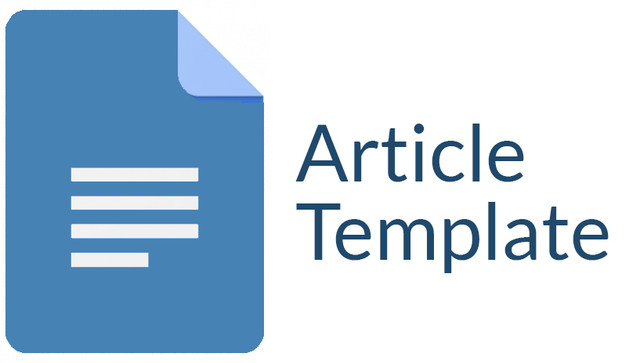Perkembangan Motorik Halus pada Anak Usia 5 Tahun dengan Ambidextrous
DOI:
https://doi.org/10.25273/jcare.v11i2.20456Keywords:
ambidextrous, motorik halus, preferensi penggunaan tanganAbstract
Preferensi penggunaan tangan kanan dan kiri pada anak rata-rata menetap pada usia 3 tahun. Anak dengan ambidextrous memiliki keistimewaan tidak memiliki preferensi penggunaan tangan. Artinya, anak dapat menggunakan tangan kanan dan kirinya dengan baik. Keterampilan menggunakan tangan dan kiri berkaitan dengan perkembangan motorik halus anak. Penelitian ini bertujuan untuk mengetahui perkembangan motorik halus anak dengan ambidextrous. Penelitian ini menggunakan pendekatan kualitatif dengan jenis penelitian studi kasus. Subjek dalam penelitian ini adalah anak dengan ambidextrous berusia 5 tahun. Hasil penelitian menunjukkan bahwa terdapat hambatan perkembangan motorik halus anak dengan ambidextrous. Meskipun anak dapat menggunakan kedua tangannya dengan baik, tetapi kekuatan kedua tangan tidak seimbang. Kecepatan penyelesaian tugas telihat berbeda antara penggunaan tangan kanan dan kiri. Kekuatan tangan kanan lebih tinggi daripada tangan kiri. Hal tersebut disebabkan oleh stimulasi yang diberikan oleh lingkungan yang tidak seimbang antara stimulasi untuk tangan kanan dan kiri. Lingkungan khususnya sekolah perlu menyadari keistimewaan dari setiap anak, sehingga mampu untuk memberikan stimulasi individual pada anak yang membutuhkan.
Downloads
References
Brewer, J. A. (2007). Early Childhood Education. Boston: Pearson.
Beaty, J. J., (2013). Observasi Perkembangan Anak Usia Dini. Jakarta: Kencana Prenadamedia.
Brown, J. (2017). Ambidextrous Brains: How Handedness Affects The Brain. Live Science Managing Editor
Bryner, J. (2010). Ambidextrous Children May Have More Problems In School. Live Science Managing Editor.
Diana, S., Mafticha, E., & Adiesti, F. (2017). Brain Gym Increase Rough And Fine Motor Development In Pre School Children Ages 4-6 Year In Nu Darul Huda's Kinder Garten-Mojokerto-Indonesia. International Journal of Information Research and Review, 4(4), 4056-4058. https://www.ijirr.com/sites/default/files/issues-pdf/2037.pdf
Donica, D. K., Massengill, M., & Gooden, M. J. (2018). A quantitative study on the relationship between grasp and handwriting legibility: does grasp really matter? Journal of Occupational Therapy, Schools, and Early Intervention, 11(4), 411-425. https://doi.org/10.1080/19411243.2018.1512068
Fagard, J., Chapelain, A., & Bonnet, P. (2015). How should “ambidexterity†be estimated?. Laterality, 20 (5), 543-570.
Folleto, J.C., Pereira, K.R., & Valentini, N.C. (2016). The Effects Of Yoga Practice In School Physical Education On Children’s Motor Abilities And Social Behavior. International Journal of Yoga, 9, 156-162. https://doi.org/ 10.4103/0973-6131.183717.
Hu, B., Rouse, E., & Hargrove, L. (2018). Fusion of bilateral lower-limb neuromechanical signals improves prediction of locomotor activities. Frontiers Robotics AI, 5(JUN), 1-16. https://doi.org/10.3389/frobt.2018.00078.
Johnston, D.W., Nicholls, M.E.R., Shah, M., & Shields, M.A. (2009). Nature’s Experiment?. Handedness and Early Childhood Development. Journal of Developmental Psychology, 46 (2).
Miles, M.B., Huberman, M., & Saldana, J. (2014) . Analisis Data Kualitatif. Jakarta: UI Press.
Nurlaila, M. O., Susari, H. D., & Anwar, R. N. (2022). Stimulasi orang tua untuk mengembangkan motorik halus anak usia dini. Seminar Nasional Sosial Sains, Pendidikan, Humaniora (Senassdra), 1, 787–790.
Ortiz, C. M., & Ortiz, C. M. (2020). Promoting Writing Development In Preschoolers. Presented in Partial Fulfillment of the Department of Occupational Science and Occupational Therapy.
Panzilion, Padila, Setyawati, A.D., Harsismanto, J, & Sartika, A. (2020). Stimulation Of Preschool Motor Development Through Brain Gym And Puzzle. JOSING: Journal of Nursing and Health, 1(1), 10-17. https://doi.org/10.31539/josing.v1i1.1166.
Rodriguez, A. (2010). Maternal pre-pregnancy obesity and risk for inattention and negative emotionality in children. Journal of Child Psychology and Psychiatry, 51(2), 134–143.
Sari, L. P. (2018). Pengaruh Senam Otak terhadap Peningkatan Motorik Halus pada Anak Usia 3-4 Tahun di Paud Mawar Tlogomas Malang. Nursing News, 3(1). https://publikasi.unitri.ac.id/index.php/fikes/article/view/794.
Shanti, E, F, A., Sunarsih, T., Utami, N. W., & Astuti, E.P. (2022). Penerapan Yoga Kids Di Rumah Dalam Menstimulasi Tumbuh Kembang Anak. JPKM Cahaya Negeriku, 2(2), 19-24. https://cahayanegeriku.org/index.php/jpkm.
Sender, Y. (2015). An intervention program for improving writing and information retrieval among students with ambidexterity. Social and Behavioral Sciences, 209, 565-571.
Sinaga, E.S. & Syari, M. (2022). The Effect of Brain Gym on Improving Fine Motoric and Gross Motoric Skills in Pre-School Children. International Journal of Public Health Excellence (IJPHE), 2(1), 318~323. https://doi.org/10.55299/ijphe.v2i1.241.
Sheedy, A. J., Brent, J., Dally, K., Ray, K., & Lane, A. E. (2021). Handwriting Readiness among Digital Native Kindergarten Students. Physical and Occupational Therapy in Pediatrics, 41(6), 655-669. https://doi.org/10.1080/01942638.2021.1912247.
White, L.S. (2009). Yoga for Children. Pediatric Nursing, 35(5), 277-295.
Woolfson, R.C. (2006). Anak yang Cerdas : Memahami dan Merangsang Perkembangan Anak Anda (terjemahan). Surakarta: Karisma Publishing Group.
Yancosek & Kathleen, E. (2010). "Injury-induced hand dominance transfer." Doctoral Dissertations. University of Kentucky Doctoral Dissertations. http://uknowledge.uky.edu/gradschool_diss/18.
Downloads
Published
Issue
Section
License

JURNAL CARE by E-JOURNAL UNIVERSITAS PGRI MADIUN is licensed under a Creative Commons Attribution-NonCommercial-ShareAlike 4.0 International License.
Author who publish with this journal agree to the following terms:
- Author retain copyright and grant the journal of first publication with the work simultaneously licenced under Creative Commons Atribution Licence that allows other to share the work with an acknowledgement of the work's authorship and initial publication in this journal.
- Author are able to enter into separate, additional contractual arrangements for the non-exclusive distribution of the journal's published version of the work with an acknowledgement of its initial publication in this journal.
- Author are permitted and encouraged to post their work online prior to and during the submission process, as it can lead to productive exchanges, as well as earlier and greater citation od published work.




